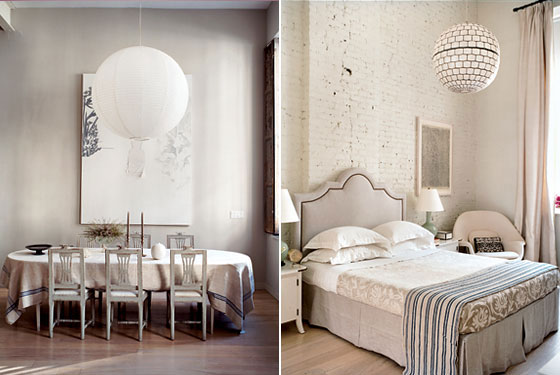
The shelter people who create lush magazines like House & Garden operate in a world between reality and show business. With a vanload of flowers and photo equipment, they turn a lovely interior into a little piece of theater, making you dream of a world where colors never clash and spills never stain.
But after Condé Nast hit the jackpot with the reality-based fashion magazine Lucky, it thought a shelter version might work, too. The thought had also occurred to Deborah Needleman, a House & Garden editor. She made the pitch, got the job, and Domino was born.
And so was a Dominotrix. Only two years after the magazine’s launch, Needleman has turned Domino, full of frank DIY tips and money-saving resources, into a roaring, 625,000-circulation success that even Martha Stewart is trying to replicate with her title Blueprint. Meanwhile, her staff helped make the Tribeca loft where she lives with her husband, Slate editor Jacob Weisberg, and two children into the paradigm of Domino’s mix-and-match, buy-what-you-like creed.
Before the family moved in six years ago, New York architect Jim Joseph created an interior structure: kids’ bedrooms upstairs, kitchen and entry downstairs. “I don’t like most loft design,” says Needleman. “I like rooms.”
But it wasn’t until after Domino launched, and Needleman roped in her editor-at-large Tom Delavan and design director Dara Caponigro to help, that the place came together. Delavan unified Needleman’s various design favorites by muting the color. The resulting world of off-white upholstery and greige paint minimized the once-brown woodwork and railings and united disparate elements like Saarinen tables, Gustavian dining chairs, and an overstuffed English sofa. Caponigro’s exacting eye helped select the right objects and edit out the rest.
“It’s really sort of a Domino project,” says Needleman of her apartment. “The paint-it-all-white thing is a total Domino trick. And so are the big paper lanterns, which cost maybe ten bucks.”
It all sounds like some 24-hour reality-TV challenge. But Needleman says that she merely wants her house, like her magazine, to be about how its occupants live. “It could be a bigger design story, but that’s not what I wanted,” she says. “This way, it’s spare and calm, and looks good, but the kids can ride their bikes and do their finger painting, and nothing’s too precious.”
For his part, Weisberg is largely contented (though he is a collector while his wife is a divestor). “I raised an eyebrow when she filled this place with white furniture,” he says. “But she said, ‘We’re not going to worry about it.’ And it’s all worked out well. It has a point of view, and it draws a little attention to itself, but not too much.”
Of course, if they tire of it all, the good news is that Needleman can do it all again. She knows where to go for expert advice.

